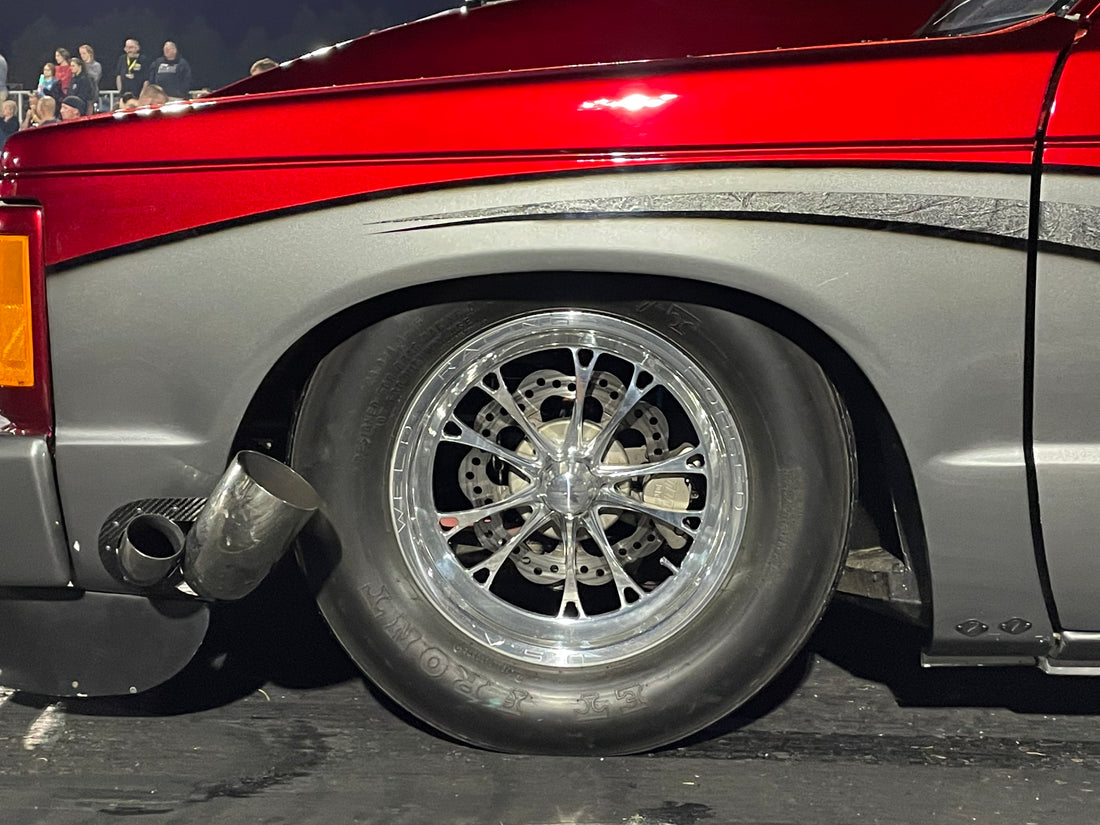Blog: Lightweight Drag Brakes: Lose the weight without sacrificing stopping power
Drag Racing brakes over the years have evolved to adapt to the vehicles they are installed on to accomplish two specific things. Reduce rotating and unsprung weight (aka be a lightweight racing brake option), and effectively stop your vehicle at extreme speeds.
Lets take a step back and talk about the differences in drag brakes and normal brake components on a form of vehicle such as an SCCA, late model, or other circle track brakes which see repetitive use.
Rotor Design:
The main difference in a drag racing brake is that we are only using the brakes one time consecutively. Meaning, you make your pass and the car gets parked or sits for several minutes or hours before being used again, it isn't consecutively testing temperature limits. Even when utilizing a "drag racing" style brake on a vehicle that gets lightly driven on the street the same is true, the temperature threshold is not being tested over and over and over consistently (unless that is how you drive on the road). For this reason a single thickness style rotor is appropriate, warranted, and a perfect match for drag racing style conditions.
There are two main down falls to a single thickness rotor. One is life span, the other is temperature control. A typical vented street or circle track style rotor has venting in the middle of the two halves which do a significant amount in the name of cooling. Additionally each of the two layers of braking surface add up to be usually almost double what a typical single thickness rotor is.
Advantages to a single thickness rotor
A single thickness rotor is a high quality piece of material that is typically stronger. Due to the complex design and requirements of a vented rotor they are typically always a cast component. This creates an issue in extreme conditions in the name of cracking and stress fractures. Because casting brings impurities by nature into the process and the material is weaker, high temps often will crack these rotors. So in a sense, single thickness drag racing rotors are better more dependable material, though their use conditions are limited.
The TBM Advantage
There is absolutely no other single thickness rotor on the market that has the characteristics, performance, and durability of the TBM Revolution lightweight drag race rotor. By design it is intended to be the strongest rotor around while staying flat through its life cycle. Believe it or not the scalloped revolution design that we invented is not as much for weight savings as it is for heat control. By creating this design we are able to manage heat across the entire inner diameter and outer diameter surface in order to control heat to reduce and nearly eliminate any chance of warping. But do we sacrifice stopping with this design? The answer is no, there is no loss of brake torque or clamping force area in lieu of this design, in fact our stopping power is increased over the competition thanks to our unique and sturdy caliper design. But we will save that for another conversation.
Do we sacrifice braking ability with a single thickness rotor?
The answer is no, the thickness of the rotor has absolutely no effect on the calculation of brake torque and stopping power. Stopping power is a component of coefficient of friction, brake torque created by piston diameter and line pressure, and the design of the caliper and bracketry being used. Nothing more is to be considered, especially in the use case as described here where one stop consecutively is being made.
Where we do see concessions or less stopping power being achieved is with improper system design including switching to manual master cylinders without proper pedal ratio adaptation, line size, master cylinder bore size, and pad choice.
Have a question on which drag brake kit is correct for you? Email us at info@tbmbrakes.com and we will be happy to analyze your system or get you setup with the best combination from scratch.
